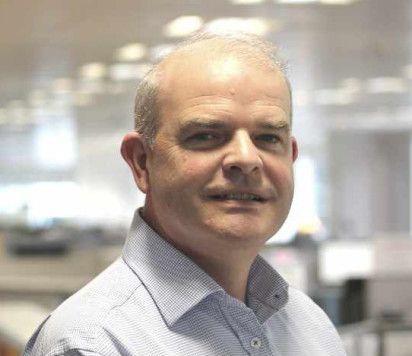Post-doctoral Researchers
Dr. Edward Walter
/prod01/channel_3/media/imperial-college/research-centres-and-groups/long-group/profile-pictures/long_group_profile_ed_walter.jpg)
Dr. Edward Walter
Research Associate in Synthetic Inorganic Chemistry and Biomedical Imaging
Dr. Bradley Osborne
/prod01/channel_3/media/imperial-college/research-centres-and-groups/long-group/profile-pictures/long_group_profile_brad.jpg)
Dr. Bradley Osborne
Research Associate in Synthetic Chemistry and Radiochemistry
Dr. William Tremlett
/prod01/channel_3/media/imperial-college/research-centres-and-groups/long-group/profile-pictures/long_group_profile_will_tremlett.jpg)
Dr. William Tremlett
Research Associate in Synthetic Organometallic Chemistry
Dr. Ryan Brown
/prod01/channel_3/media/imperial-college/research-centres-and-groups/long-group/profile-pictures/long_group_profile_ryan_brown.jpg)
Dr. Ryan Brown
Research Associate in Chemical Biology
Post-doctoral Researchers
- Dr. Edward Walter
- Dr. Saul Cooper
- Dr. Bradley Osborne
- Dr. William Tremlett
- Dr. Ryan Brown
- Dr. Grace McMullon
PhD and MRes Students
Ben Woolley
/prod01/channel_3/media/migration/research-groups/ben-woolley_1620738305058_x4.jpg)
Ben Woolley
Final year PhD student
William Lim Kee Chang
/prod01/channel_3/media/migration/research-groups/william-lkc_1620738347471_x4.jpg)
William Lim Kee Chang
Final year Smart Medical Imaging CDT PhD student
Katharine Welch
/prod01/channel_3/media/migration/research-groups/katharine_1641302825286_x4.jpg)
Katharine Welch
Final year PhD student
Christina Siakalli
/prod01/channel_3/media/imperial-college/research-centres-and-groups/long-group/profile-pictures/long_group_profile_christina_siakalli.JPG)
Christina Siakalli
2nd year Smart Medical Imaging CDT PhD student
Bihan Liu
/prod01/channel_3/media/imperial-college/research-centres-and-groups/long-group/profile-pictures/long_group_profile_bihan_liu.jpg)
Bihan Liu
2nd year PhD student
Mrunal Tamhankar
/prod01/channel_3/media/imperial-college/research-centres-and-groups/long-group/profile-pictures/long_group_profile_MT.jpg)
Mrunal Tamhankar
2nd year PhD student, Wilkinson Trust Scholar
Sean Nwachukwu
/prod01/channel_3/media/imperial-college/research-centres-and-groups/long-group/profile-pictures/long_group_profile_sean_nwachukwu.jpg)
Sean Nwachukwu
2nd year ICB CDT PhD student
Hongxuan Chen
/prod01/channel_3/media/imperial-college/research-centres-and-groups/long-group/profile-pictures/long_group_profile_aimee.jpeg)
Hongxuan Chen
1st year PhD student
Rie Rønnow
/prod01/channel_3/media/imperial-college/research-centres-and-groups/long-group/profile-pictures/long_group_profile_rie.jpg)
Rie Rønnow
ICB CDT MRes student
PhDs
- Ben Woolley
- William Lim Kee Chang
- Katharine Welch
- Titan Lai
- Christina Siakalli
- Bihan Liu
- Mrunal Tamhankar
- Sean Nwachukwu
- Hongxuan Chen
- Rie Rønnow
Undergraduate Students
Tom Japes
/prod01/channel_3/media/imperial-college/research-centres-and-groups/long-group/profile-pictures/long_group_profile_tom_japes.jpg)
Tom Japes
MSci student
Tasnim Sadik
/prod01/channel_3/media/imperial-college/research-centres-and-groups/long-group/profile-pictures/long_group_profile_tasnim_sadik.jpeg)
Tasnim Sadik
MSci student
Sara Tomita
/prod01/channel_3/media/imperial-college/research-centres-and-groups/long-group/profile-pictures/long_group_profile_sara_tomita.jpeg)
Sara Tomita
MSci student
Undergraduates
Contact
Professor Nick Long
Email: n.long@imperial.ac.uk
Telephone: +44 (0)20 7594 5781
Location
501J
Molecular Sciences Research Hub
White City Campus
/prod01/channel_3/media/migration/research-groups/saul_1620737389513_x4.jpg)
/prod01/channel_3/media/imperial-college/research-centres-and-groups/long-group/profile-pictures/long_group_profile_grace_mcmullon.jpg)
/prod01/channel_3/media/imperial-college/research-centres-and-groups/long-group/profile-pictures/Titan_Lai.jpg)
